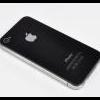Τα νέα iPhone 6 και iPhone 6 Plus φαίνεται πως κερδίζουν τα περισσότερα ανταγωνιστικά μοντέλα Android σε επιδόσεις της CPU αλλά και στην διάρκεια της μπαταρίας, σύμφωνα με σειρά μετρήσεων (benchmarks) που διενήργησε το AnandTech, η εγκυρότερη ίσως ιστοσελίδα για hardware-reviews.
In in GPU benchmarks, we generally see a pretty solid lead over the competition for the iPhone 6/A8. It's seems quite clear that there is a significant impact to GPU performance in the iPhone 6 Plus due to the 2208x1242 resolution that all content is rendered at. It seems that this is necessary though, as the rendering system for iOS cannot easily adapt to arbitrary resolutions and display sizes.







There are a few interesting observations here, as a great deal of the scaling is above what one would expect from the minor frequency bump when comparing A7 and A8. In SunSpider, we see about a 13% increase in performance that can't be explained by frequency increases alone.
For Kraken, this change is around 7.5%, and we see a similar trend across the board for the rest of these tests. This points towards a relatively similar underlying architecture, although it's still too early to tell how much changes between the A7 and A8 CPU architectures.




Τέλος, όσον αφορά την διάρκεια χρήσης της μπαταρίας το iPhone 6 ξεπερνάει τα περισσότερα ανταγωνιστικά μοντέλα Android, ενώ το iPhone 6 Plus βρίσκει από πάνω του μόνο το Huawei Ascend Mate 2:
As with all of our battery life tests, we standardize on 200 nits and ensure that our workload in the web browsing test has a reasonable amount of time in all power states of an SoC.
As one can see, it seems that Apple has managed to do something quite incredible with battery life. Normally an 1810 mAh battery with 3.82V nominal voltage would be quite a poor performer, but the iPhone 6 is a step above just about every other Android smartphone on the market. The iPhone 6 Plus also has a strong showing, although not quite delivering outrageous levels of battery life the way the Ascend Mate 2 does.
















